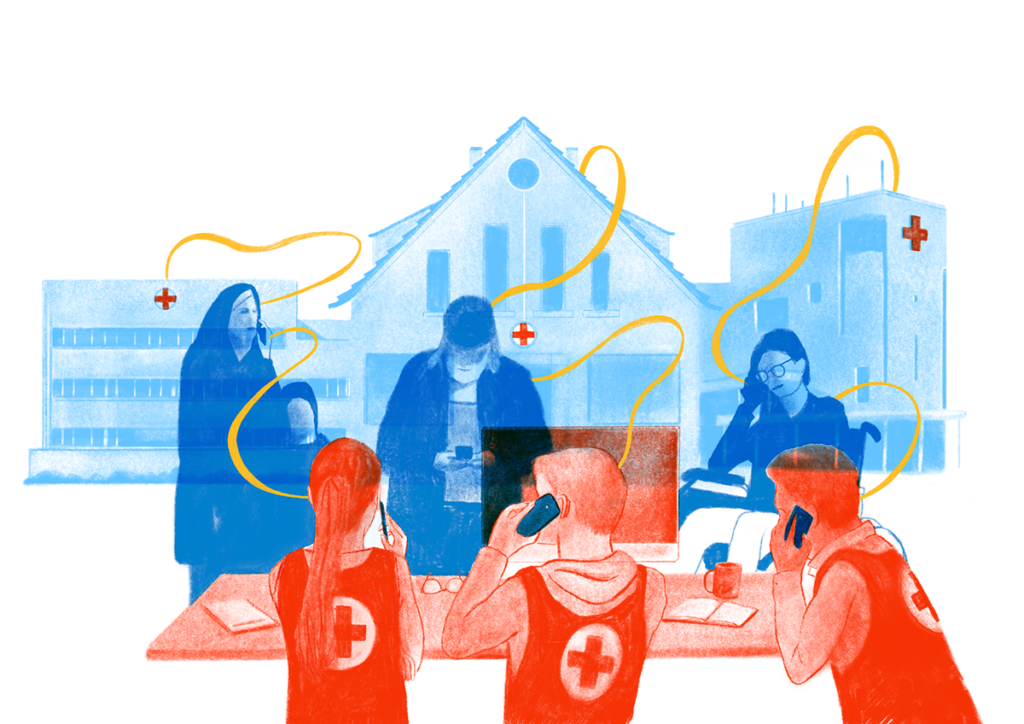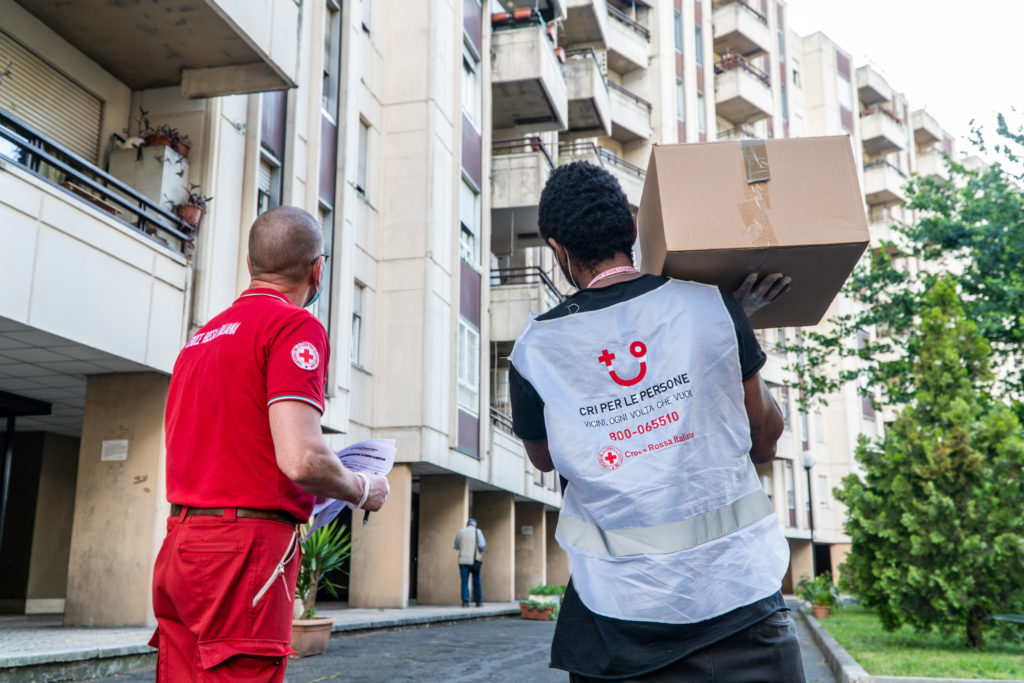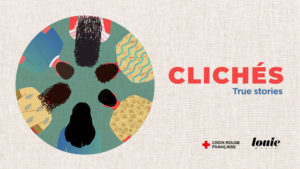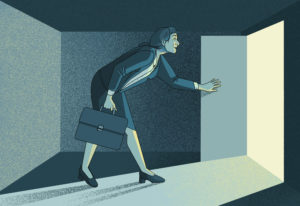
Description
« CRI per le persone » (“Italian Red Cross for the people”) is a project that started in August 2018 in the framework of a grant agreement with the Italian Ministry of Labour and Social Policies. The main goal of the project is to foster support and social inclusion for the benefit of the most vulnerable people, by providing guidance and facilitating access to social and health services offered by the ITRC Local Branches and other public and private entities in the territory, in order to bring an improvement in their well-being and participation in the life of the community. Throughout the development of processes, activities and innovative social services, the project addressed the roll out of a single point of access platform for all the social and health services provided by the Italian Red Cross or other entities. Besides the project enabled the set up of an helpline dedicated to tele-assistance of users.
Context

Aging of the population, various vulnerability conditions and isolation of fragile individuals are matters of concern for the national welfare system since many years. The precarious scenario worsened due to the consequences of Covid-19 pandemic on health and social conditions.
While Italy ranks among the top places in Europe and worldwide for life expectations (83,4 years in 2018), the aging of population carries epidemiological and health issues, such as chronical and functional diseases. In spite of an expectation of life among the longer in the world, Italy has to deal with a much lower expectation of life in good health score: 66,8 years for men and 66,9 years for women. Along with the family background, educational and environmental factors intervene on the capability of individuals to access to assistance services, whether formally or informally structured.
Whereas the elder population is the numerically higher vulnerable collective to whom the social services address, many other individuals are found in vulnerable conditions derived from other factors rather than age, e.g. economical poverty. In 2019 4,6 ml people were reported to live in poverty, the majority of which living in the south of Italy, in metropolitan areas and within larger families with minors. Foreign origins and educational background are also regarded as critical factors for poverty conditions to rise.
Public services are targeting all the above mentioned issues with discontinued and partial responses, mostly based on residential structures rather than home assistance, which in some cases do not adapt to the specific needs of each subject.
A research by OCPS- SDA Bocconi (Filling the gap in LTC, 2015) shows how vulnerable individuals and their families actually need safe environment at home and quick support in case of emergencies, with a qualified and direct reference point that facilitate to prevent critical issues. This would also enable families to match working and daily life commitments with the assistance of the fragile individuals within the family.
Technical details & Operations
The project foresaw the implementation of two main actions to be carried on within 3 years:
- The creation of a single point of access to all the Italian Red Cross services for the community;
- The development of a pilot tele-monitoring assistance to counter fragilities and social isolation with 24h service (so called GeoPe)
In order to pursue the first action, the Toll Free number 800-065510 was launched in June 2019. The Toll Free number works 24h for 7 days per week providing the following services:
- Pieces of information on Italian Red Cross activities and services
- Referral to local public services
- Involvement of the relevant Italian Red Cross local branch for the delivery of a specific service
- Phone company
- Psychological support
A proper handling of the incoming call is supported by:
- Detailed analysis of the request, aiming to reach a full understanding of the request also considering eventual “hidden needs”, that the user would not explicitly communicate
- Management of the request and its details through the IT platform, that allows to forward the lead to a local Red Cross branch and keep trace of the received calls, data and relevant follow up
- Availability of a Service Catalogue including all the details of the services offered by the local sites
- Availability of FAQ guidelines
Here follows a brief description of the structured process that applies to incoming calls:
- First level reception: trained operators collect the request and record the available data
- Back Office: operators assess each case, eventually involving also professional personnel and collect pieces of information on the service that would better fit the case
- Second level forwarding: based on the specific case, operators would address the user to a local service or to remote tele assistance services, eventually provided directly from the Toll Free number
- Feedback collection: a follow up and a review of the issued service is performed
Among the others, one of the direct services that the Toll Free number can deliver is remote companionship. The service provides the beneficiary with a regular call lasting around 30 minutes.
Another kind of assistance is the psychological support, also provided remotely involving professional psychologists that would dedicate a maximum of 4 calls per beneficiary. Once the available calls are over, if the user still needs that support, a local service is involved. If the professional support is no longer needed the beneficiary could still use the remote companionship service.
On the other side, the pilot tele-assistance and tele-monitoring service “GeoPe” involved around 100 people. Participants were provided with a smartwatch able to detect eventual falls or other incidents and to localize the user through GPS in case of urgent assistance was required. The smartwatch was in direct connection with the Toll Free number and would send recorded data to the platform every 180 seconds. When the device sent an emergency alarm to the platform, it would also provide the exact position and a 120 seconds audio streaming where the user could address to the platform detailing his status. The emergency alarm would activate automatically in case of sudden hit or could be initiated by the user on purpose.
This pilot was tested involving 8 people for a precise analysis of the smartwatch settings and to make sure no technical issue or bug would jeopardize the following implementation. Once this phase was over, around 94 users were given the smartwatch and carried it for 3 months.
Deployment & Impact
The Toll Free Number Service in numbers
Since its activation (June 2019), the Toll Free Number has proved to be a reliable access point for a large number of requests. Service responsiveness is measured in terms of flow of calls received and requests handled on behalf of the beneficiaries. Four main phases can be identified as follows :
- « Planning of the service » (from August 2018 to May 2019) dedicated to the inception phase mainly including the setting- up of the project team, the engagement of the stakeholders, the procurement ;
- « Start of the service » (from June 2019 to February 2020) with 30.020 calls registered from all over Italy during the first 8 months;
- « The first lockdown » imposed as a measure to face the Covid-19 health emergency (from March to May 2020), in which the system was able to manage up to 94.172 requests in only 3 months ;
- « Post lockdown » period (from June to October 2020) with higher numbers than those of the period before the lockdown (22.764 telephone contacts distributed over 5 months) ;
- « The second wave » period (from November 2020 up to March 2021) with a new peak in requests (around 35.000 in only 5 months).
Generally, the project reached about 150.000 people and allowed the activation of over 55.000 services, benefiting from the Italian Red Cross widely spread network (150.000 volunteers and over 658 branches).
Cri per le persone and the National Response Center: a model for the response to Covid-19 emergency
Due to the spread of the Covid-19 pandemic and due to the consequent restrictions effective as of March 2020, the project had to be adapted in order to support the sudden and significant increase of calls to the Toll Free number and the change of the needs of the people calling for help. Only in the period between March, 2020 and May, 2020 almost 100,000 people called the Toll Free which answered more than 1.000 phone calls per day.
In order to cope with such amount of calls and the changes of the users needs, the National Response Center has been strengthened by integrating the Toll Free Number Service in its operational structure.
Two priority challenges have been identified:
- consolidating and enhancing the services already carried out at local level, such as medical transport;
- managing the response to new requests, for example from people unable to leave the house to go to the supermarket or pharmacy, providing them with services tailored to their needs (grocery and medicines shopping delivery);
The following main actions were implemented in the new structure:
– enhancing the response system, engaging about 62 people (per shift) both staff and volunteers in answering the phone;
– setting up two specialized desks involving medical and psychological staff such as 6 doctors and 21 psychologists ready to support the Toll Free Number in providing users with specialized consultation, information and any other emergency support.
Besides, a chatbot was implemented in the national Red Cross website with the aim of spreading verified pieces of information and advices on the Covid-19 along with a number for SMS exchanges arranged for the same purpose.
With regards to the GeoPe activities, involved users and caregivers both reported a higher feeling of safety derived by the awareness of carrying the tool. As this pilot engaged people of all age that might need the tool’s support in case of any functional disease, the younger users would appreciate the technical and modern approach of the safety smartwatch. The smartwatch proved to be an useful tool for those developing personal and social independence. Local and public entities recognized the value of the project and the network between the Red Cross and other organization also improved.





